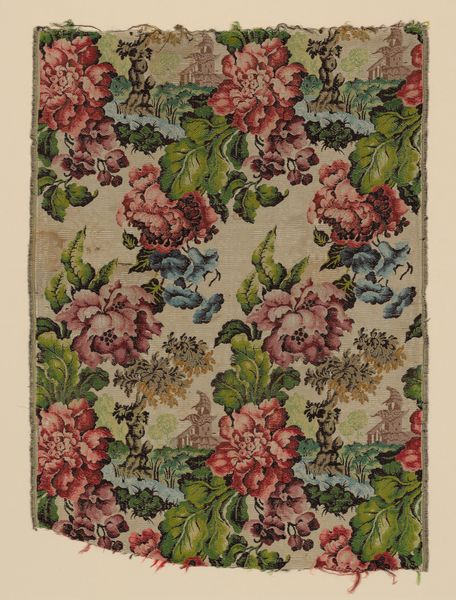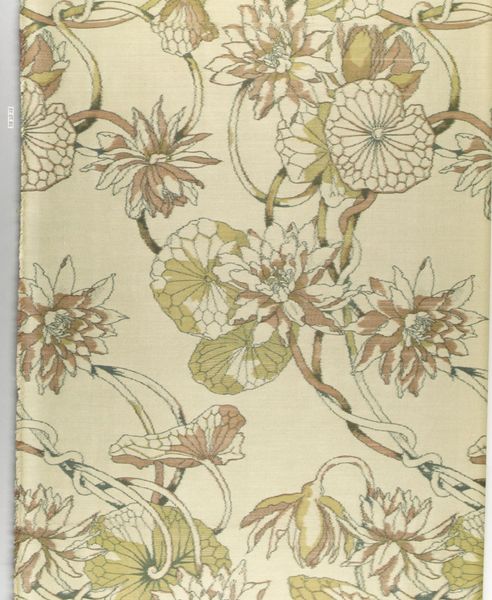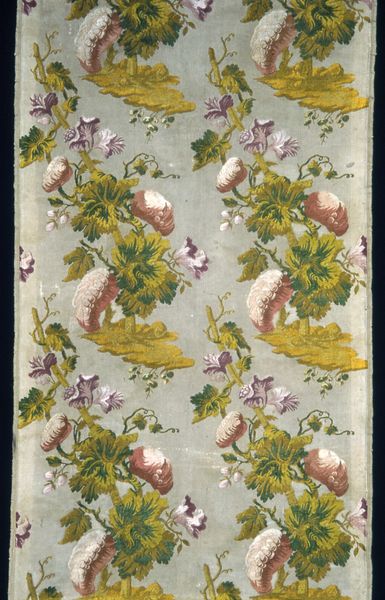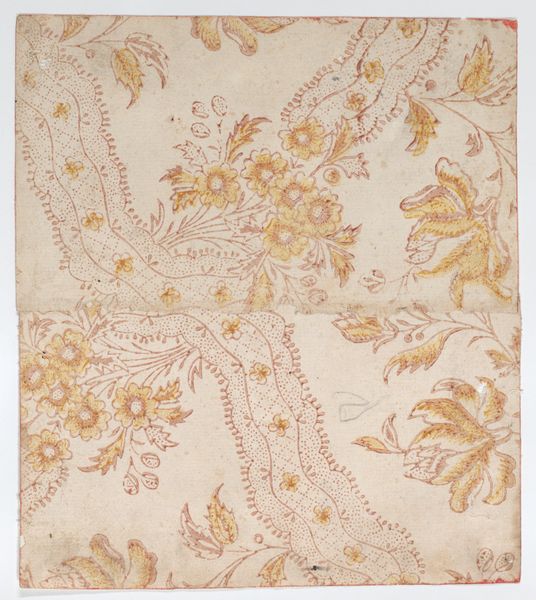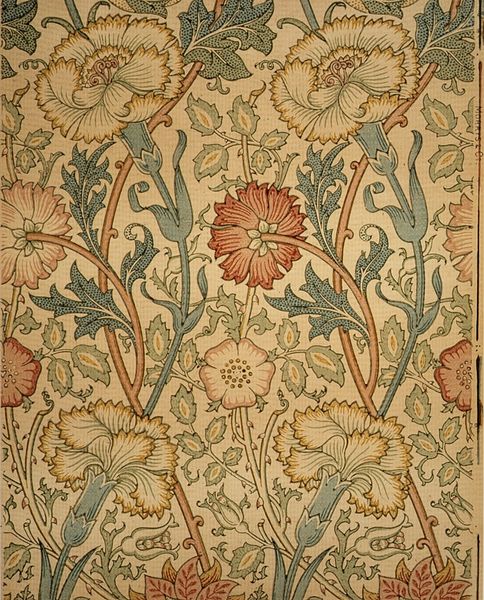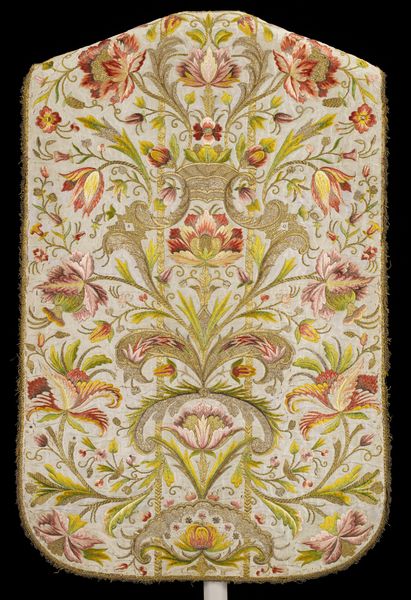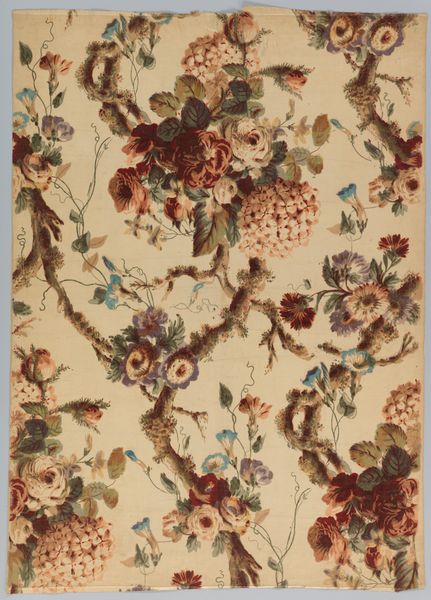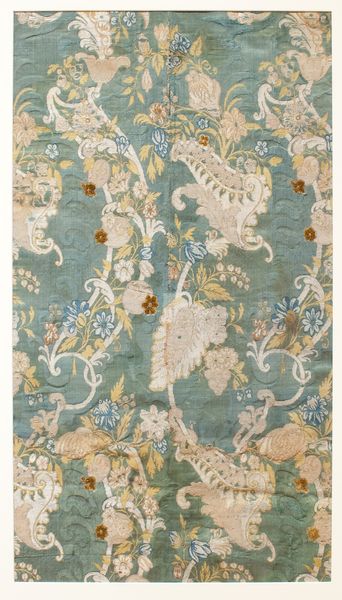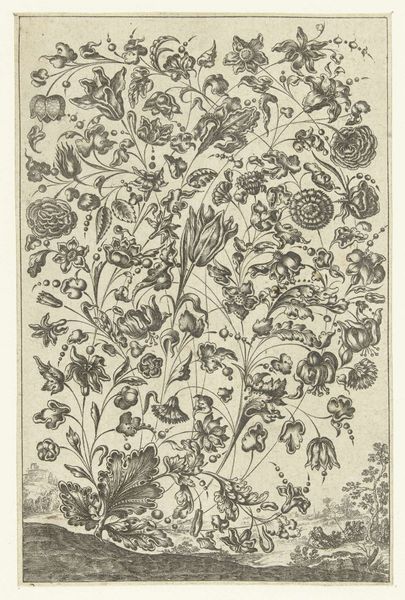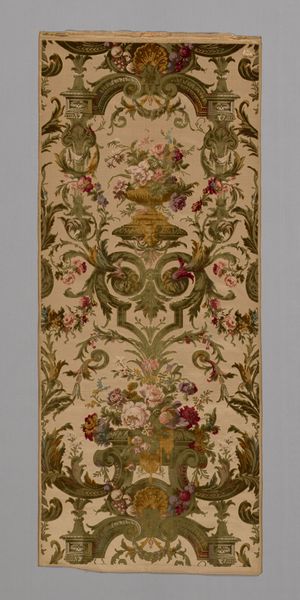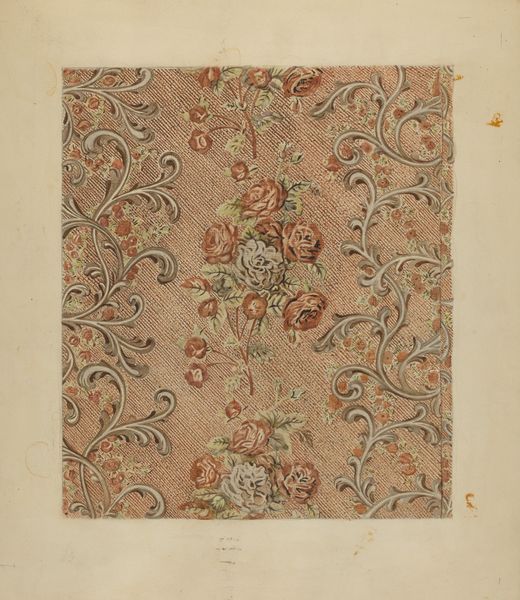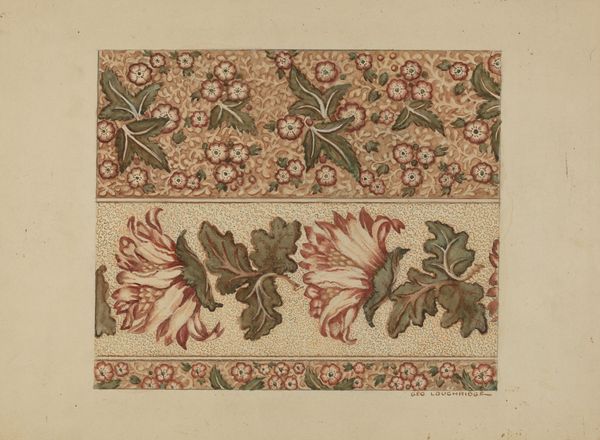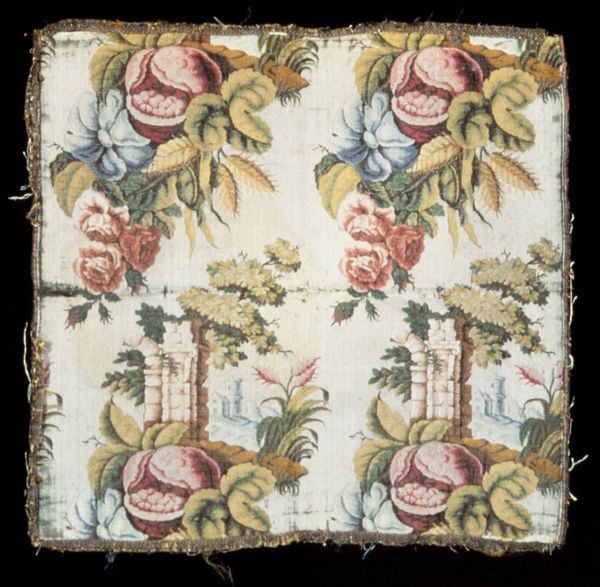
Dimensions: Sheet: 10 3/8 × 15 3/4 in. (26.3 × 40 cm)
Copyright: Public Domain
Editor: This is a printed sheet with an overall floral pattern, dating from around 1700-1800. It's unsigned, so attributed to an anonymous artist, and it’s at the Met. Looking at it, I immediately think of chintz fabrics and old-fashioned wallpaper; it has a really gentle, faded charm. What catches your eye about it? Curator: Faded charm – I love that description! It does whisper stories of forgotten parlors and sun-drenched boudoirs, doesn't it? For me, it’s the slightly wonky repetition, the human touch within a printed pattern. Each flower isn’t quite identical, is it? There's a certain rebellion against perfect uniformity. Does that speak to you at all? Editor: Absolutely, I noticed that too! It feels almost handcrafted, despite being a print. And those colours... muted pinks and greens. Were these common in textile design of that period? Curator: Indeed. They speak to a very specific aesthetic—one deeply intertwined with the romanticism of the era. Imagine the artists carefully layering the dyes, trying to capture nature's delicate blush in a permanent form. You could almost smell the dyes and hear the squeak of the printing press. Do you imagine it was framed or was its function something different? Editor: Possibly textile or wallpaper given that romantic link and textile designation, it feels so connected to interior spaces of that period, to dressing rooms and boudoirs like you said... the more I think about its possible function as wallpaper, the more intriguing the work gets, it is like peering into someone's home and personal spaces of that period! Curator: Precisely. It’s like a tiny window into their world. Who would have thought that a humble floral print could hold so much history? Editor: It's amazing how a seemingly simple pattern can evoke such a vivid sense of time and place. I will now forever think about patterns on the walls in a different way, they are now little doors to the past.
Comments
No comments
Be the first to comment and join the conversation on the ultimate creative platform.
